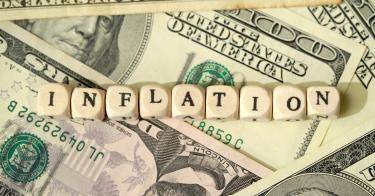Inflation accelerated last month, just ahead of the one-year anniversary of the deceptively named Inflation Reduction Act (IRA). When President Joe Biden signed that piece of legislation, he promised it would bring down costs. Instead, the IRA has increased costs through burdensome taxation and regulation while doing nothing to address the true causes of inflation.
Biden and a Democrat-controlled Congress used parliamentary tricks to ram through the IRA at a time when inflation was at 40-year highs. The inflation was fundamentally caused by the government spending too much money. The spending caused the U.S. Treasury to effectively borrow trillions of dollars from the Federal Reserve, which created the money out of nothing.
That destructive process has devalued the dollar by 16 percent since Biden's inauguration. If we are to stop the bleeding, we must cut government spending. But the IRA did precisely the opposite, spending hundreds of billions, while adding insult to injury via higher taxes, plus additional costs through new regulation.
>>> These Record Debt Figures Are a Massive Red Flag for the American Economy
The new spending fanned the inflationary flames and new taxes throttled economic growth. Since inflation occurs when there is too much money relative to the size of the economy, this was a double whammy, moving both factors in the wrong direction.
Yet inflation fell after the IRA's passage and the Biden administration quickly credited the legislation. That was a bait and switch, however, since inflation was falling before Biden signed the IRA into law. Now that inflation is accelerating, the president is abandoning the IRA's moniker, publicly wishing his party had given it a different name.
That's understandable since higher inflation rates expose the IRA's fraudulent marketing. But a question remains: why did inflation begin falling before the IRA and continue for about a year? Four factors explain the decline.
First, the Fed drastically slowed its purchases of Treasury debt and has been a net seller since inflation peaked last summer. This tighter monetary policy from the Fed has helped reduce the amount of money but is also driving up interest rates, making borrowing prohibitively expensive for many Americans, including potential home buyers.
Second, the president has drained almost half the strategic petroleum reserve (SPR). Since energy affects everything we do and everything we buy, this increased supply helped to reduce costs, but draining the SPR was never a long-term strategy, chiefly because its size is limited.
Meanwhile, Biden has hamstrung domestic energy production, including through the IRA, which imposed new taxes and regulations on American oil, coal, and natural gas. These burdens are now increasing energy costs and there are no more drains from the SPR to cover them up.
A third factor slowing inflation has been a reduction in the growth of spending since Congress became divided in January 2023. Without complete control, Democrats have struggled this year to pass more of their legislative spending agenda.
>>> The Decline and Fall of the U.S. Dollar
Lastly, the global economic slowdown has temporarily cooled inflation as international trade trends downward and demand for American exports falls. Like the draining of the SPR, this is merely a temporary effect and doesn't address the long-run problem of there being too much money relative to the size of the economy.
The reason inflation remains elevated today, despite coming off 40-year highs, is that government spending remains elevated. Furthermore, annualized data since June 2022 show that inflation has not been trending towards the Fed's 2 percent target, but rather towards 3 percent. It has arrived there, and there's no indication it is going any lower, anytime soon.
That is not surprising, since neither Biden nor most of Congress have any intention of returning the budget to reasonable levels. They do not have the political will to cut spending, as was indicated in the IRA. That means the Treasury will continue borrowing at its current breakneck pace—or faster if the economy falls into recession.
But political will is also in short supply at the Fed, which has not done enough to fight inflation. Doing so would make today's government spending levels, and laws like the IRA, prohibitively expensive. That means America is stuck with elevated inflation until there is the political will to end it.
This piece originally appeared in Newsweek


